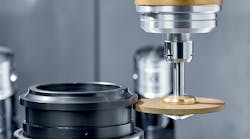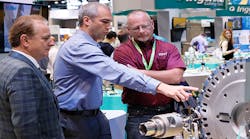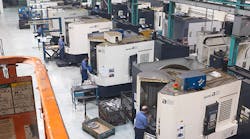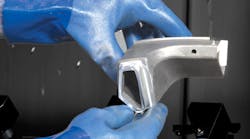Collaborative robots are supposed to be the future.
Software-based, slow, intuitive and tiny (by traditional robot standards), they offer a totally different automation experience, eliminating the need for safety barriers, cages, complicated programming, and in some cases even dedicated technicians.
They bring the human worker and the robotic tools together in the same space to enhance productivity across the floor. Or at least that's what the brochures say.
One robot-maker leading this new field – Universal Robots – has helped make that interaction with these so-called "inherently safe" machines even safer.
At IMTS 2014 in September, Universal Robots will be showing off the third generation of its UR5 and UR10 robotic arms, which are chock full of new features designed to make them safer, smarter and more efficient than ever before.
One feature of note is its context aware operations, which help modulate speed and power depending on the robots' job and environment.
As CTO, Esben Østergaard, explains it: "When a human enters the robot’s work-cell, the robot arm can operate in reduced mode, and then resume full speed when he leaves again. Or, the robot can run full speed inside a CNC machine for example, and then reduced speed when outside."
To pull that off, the company has designed a totally new safety system that monitors eight different functions: joint positions and speeds, TCP positions, orientation, speed and force, as well as the momentum and power of the robot. The settings can only be changed in a password protected area.
Powering Up
Another interesting in the new generation is the "True Absolute Encoders," which allow the robot to achieve faster start-up with fewer re-initializations.
Whereas other industrial robots with incremental encoders work like absolute encoders only until the battery runs out, the encoders in the UR robots are not battery driven. That eliminates , the need to frequently re-initialize the robot arms since their position in space is known despite the robot not requiring battery power to achieve this function, the company says.
Also, though the new arms still look the same on the outside, inside they are crammed with sixteen additional digital I/Os -- double the number of built-in I/Os from the previous generation. The control box has a revised design and a rebuilt controller to further improve the possibilities for connecting equipment to the control boxes.
According to the company, all the new features of the third generation robots have been certified by TÜV (Technischer Überwachungs-Verein -- a German organization that work to validate the safety of products) and tested in accordance with EN ISO 13849:2008 PL d and EN ISO 10218-1:2011, Clause 5.4.3.






